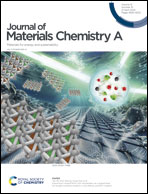First-principles investigation of the structural stability, electronic, and thermodynamic properties of Ba2NaHaO6 (Ha = Cl, Br, I) periodate double perovskites
Abstract
Barium-based periodate double perovskites Ba2NaHaO6 (Ha = Cl, Br, I) are strong candidates for novel optoelectronic applications. Here, the structural and electronic properties and dynamic stability of these oxides are examined systematically by first-principles calculations. This study finds that halogen substitution from Cl to Br to I in Ba2NaHaO6 increases volume and improves structural stability, as shown by elongation of Ha–O and Ha–Na bond lengths, increased bulk modulus, enhanced cohesive and decomposition energy, and reduced formation energy. However, Ba2NaIO6 oxide exhibits superior stability with greater cohesive and more negative formation energy and higher decomposition energies. Further, three oxides are found to be direct band gap semiconductors with band gap values of 0.5993, 0.6040, and 2.2298 eV for Cl, Br, and I-substituted structures, respectively. Also, pressure widens the band gap, improving UV absorption, while temperature narrows the band gap, enhancing IR and visible absorption of these oxides. In addition, three structures exhibit thermodynamic stability with low gradient temperature dependent curves for the bulk modulus (B), Grüneisen parameter (γ), Debye temperature (θD), and thermal expansion coefficient (α). The temperature-dependent phonon dispersion spectra further validated the dynamic stability of all three structures, with no soft modes or imaginary frequencies present. Owing to the promising structural, electronic, and thermodynamic properties, these oxides can serve as a functional layer in solar cells or optoelectronic devices.



 Please wait while we load your content...
Please wait while we load your content...